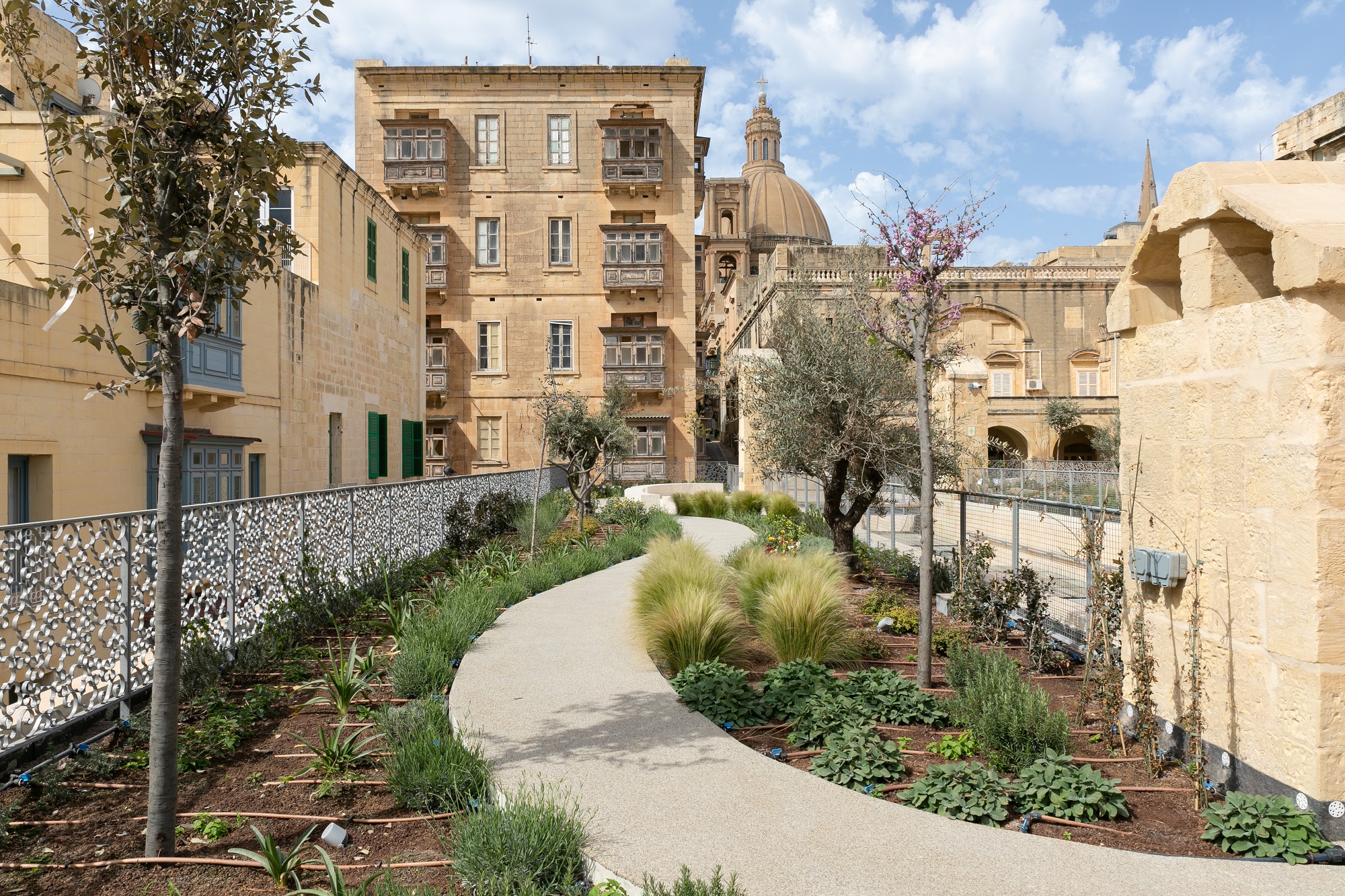The newly opened roof garden at the Valletta Design Cluster, is a unique feature of the €10.5 million project giving a much needed dose of green urbanisation to a Valletta building which was neglected for over 40 years.
The creation of roof gardens is a relatively new concept in Malta. Factors such as climate, local biodiversity, proximity to the sea, and exposure to strong winds all go into shaping such a project. The historical context of the streets and neighbourhoods in Valletta are also an important influence, and the project needed to be sensitive to the cultural, natural and social contexts in which it is embedded. The Valletta Cultural Agency has benefited from the input of various partners in achieving this.
Discussing the process that led to the garden, Architect Frank Muscat on behalf of Doric Studios, which brought plans of the garden to fruition, explained that following an assessment of the roof, anti-root membrane and the necessary protection was installed together with a drainage layer. The irrigation of the whole garden is now connected to two large cisterns that lie underneath most of the building, and which are themselves fed by a rainwater catchment system installed in the building.
The greenery on the roof also helps to keep the temperature stable inside the rooms underneath, making the space less dependent on artificial cooling and heating throughout the year. In addition, the glass canopy overlooking the central courtyard of the Cluster has in-built photovoltaic (PV) cells that generate electrical energy and reduce the Valletta Design Cluster’s dependence on fossil fuel energy.
Several indigenous plants that are hardy enough for a roof which is close to the sea and which can withstand the weather, have been selected, explains Melosaul Balzan, from Derek Garden Centre. Olive, Judas, Pomegranate, Oak, Frangipani and Virbinium trees have been planted along with several herbs, shrubs and flowering plants.
The substrate comes from volcanic sources since Maltese soil is heavy in clay which may cause problems in the plants’ root system.
Malta lacks green spaces therefore this project is so important for our island and serves as an example for roof gardens around the island including private residences. These gardens eliminate heat from the roof and Mr Balzan believes these should be included on any future construction projects.
The roof garden at the Valletta Design Cluster is a large-scale upcycling exercise, including intensive recycling of several structural features found on site. A dilapidated urban area has been converted into a space that can accommodate social and cultural activity without the need to consume precious new land on the peripheries of our towns and villages.
Green walls are another interesting concept and while they do not replace gardens or trees, they serve as features while producing oxygen. Mr Balzan therefore encourages anyone interested not to give up on any gardening projects they would like to undertake as greenery should be a more intrinsic part of our lives.
The roof garden is fully accessible via a lift linking the space to the ground floor and the central courtyard of the Valletta Design Cluster and is open to the public daily from 8am to 6pm.
